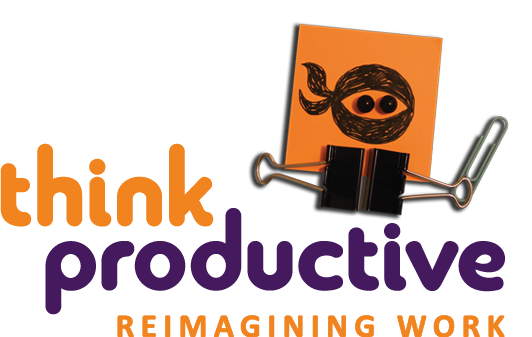Matthew Brown is our London Productivity Ninja, delivering time management workshops with a difference
Read the introduction and Part 1 of this blog post series here, and read more by Matthew on his blog
This is the first in a series of three Blogs inspired by the outstanding book “Thinking, Fast and Slow” by Daniel Kahneman. Kahneman won the Nobel Prize for Economics in 2001. But he’s not an economist; he’s a behavioural psychologist. He has been called the father of Behavioural Economics.
Read this book and you’ll see why.
His thesis is based on the two types of thinking that we exhibit, which he labels System 1 and System 2.
> System 1 is fast, intuitive and easy.
> System 2 is slow, deliberate and requires effort.

The book studies Kahneman’s lifetime of work in the area of risk assessment and decision-making.
This matters because we see ourselves as rational decision-makers. The book makes a strong case that this is not so. This matters to Productivity Ninjas because we work on the basis that, with clear head space, we can make good choices. Wrong, it seems. Interestingly, Kahneman has said that even knowing what he knows of these “cognitive biases”, and having spent his entire life studying them, he still struggles to overcome them. It really is that ingrained.
This Blog post looks at one particular type of cognitive bias: Substitution Bias.
Substitution Bias
Our brains are lazy.
When faced with a complex problem, we are reluctant to crank up System 2; we much prefer to leave it to System 1. Faced with a difficult problem, it is remarkable how frequently we resort to answering a different, simpler, question.
An easy question (How do I feel about it?) is substituted for a difficult one (what do I think about it?). Kahneman labels the real question the “target question” and the lazy question the “heuristic question”.
Here are some examples from the book:
| Target question | Heuristic question |
| How much would you contribute to save an endangered species? | How much emotion do I feel when I think of a dying dolphin? |
| How happy are you with your life these days? | What is my mood right now? |
| This candidate is running for election? How far will he go in politics? | Does this candidate look like a winner? |
Put like this, you can see the process.
To assess the prospects of a political candidate is a complex, multi-variable judgement. We can’t be bothered to do the work to answer the difficult question so we substitute an easier question.
In summary, and to quote Kahneman, “…a lazy System 2 often follows the path of least effort and endorses a heuristic answer without much scrutiny of whether it is truly appropriate. You will not be stumped, you will not have to work very hard, and you may not even notice that you did not answer the question you were asked. Furthermore, you may not realise that the target question was difficult, because an intuitive answer came readily to mind”.

Like this? Try these
Happiness Versus Well-Being (psychologytoday.com)
Sign up for one of our London workshops – How to Get Things Done and Getting Your Inbox to Zero
Find out about Think Productive UK founder Graham Allcott’s Diceman Experiment
8 Traits of Ninja Decision Making thinkproductive.co.uk

